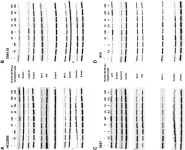(Press-News.org) Medicare Part D plans significantly increased restrictions on prescription drugs, excluding more compounds from coverage or subjecting more of them to review before patients could access the treatments, according to a new study from USC researchers.
Among drugs not in Medicare “protected classes,” the share of drug compounds restricted or excluded by Part D plans surged from an average of 31.9% in 2011 to 44.4% in 2020, according to the study published in the March 2024 issue of Health Affairs. Brand-name-only compounds (those without a generic alternative) were especially limited, with more than two-thirds of them subject to utilization restrictions or excluded from coverage altogether, researchers found.
Provided through private insurance plans that contract with the government, Medicare Part D is a prescription drug benefit for people with Medicare. In 2023, more than 50 million of the 65 million people covered by Medicare were enrolled in Part D plans, according to KFF.
Pharmacy benefit managers and health plans argue that such restrictions help control costs by ensuring patients do not use more expensive treatments when less expensive but equally effective therapies are available. But the large and increasing number of compounds that are subject to review or excluded from coverage raises concerns of the impact on patient health, researchers say.
“There are a lot of drug classes that are heterogeneous, where one drug may work for one patient but another drug may work for a different patient, so there are cases where this could be detrimental,” said study lead author Geoffrey Joyce, director of Health Policy at the USC Schaeffer Center for Health Policy & Economics. “This could lead to negative outcomes for patients that are not being considered.”
Using Medicare data, researchers examined trends in Part D plans excluding compounds from coverage or applying one of two utilization restrictions: “prior authorization,” which require plan members to get approval before filing a prescription; or “step therapy,” which require plan members to try a different medication before using the prescribed one.
Researchers conducted their analysis at the drug compound level. A drug “compound” includes branded and generic versions of a drug when they exist, and does not distinguish between them. Compounds were classified as “brand-name only” if no generic version existed in that year. All other compounds were classified as “generic available.”
The study found:
In 2011, plans excluded, on average, 20.4% of compounds and subjected another 11.5% to prior authorization or step-therapy restrictions. By 2020, plans excluded 30.4% of compounds and placed another 14% under prior authorization or step therapy.
Restrictions were more common among brand-name-only compounds, among more expensive compounds, and in stand-alone prescription drug plans compared with Medicare Advantage prescription drug plans.
By 2020, 3 in 10 generic-available compounds and more than two-thirds of brand-name-only compounds in unprotected classes were restricted or excluded from coverage altogether.
Study co-author Karen Van Nuys, executive director of the Value of Life Sciences Innovation at the Schaeffer Center, noted that the rise in restrictions and formulary exclusions occurred as premiums for plans increased.
“Plans are charging more and they're covering less, so it’s a double whammy,” Van Nuys said.
The increasing reliance on formulary exclusions was especially striking, researchers said. In the past, a patient wanting a certain drug might face a higher co-pay, noted Joyce, chair of the Department of Pharmaceutical and Health Economics at the USC Alfred E. Mann School of Pharmacy and Pharmaceutical Sciences. With plans now refusing to cover many drugs at all, only patients who can afford to pay the full price out of pocket can get that medication.
“For expensive drugs, that basically takes that treatment off the table,” Joyce said.
About the study and the USC Schaeffer Center
This research was supported by grants from the American Medical Association and the National Institute on Aging, National Institutes of Health (Award No. R01-AG055401). In addition to Joyce and Van Nuys, the study was co-authored by Barbara Blaylock, founder of Blaylock Health Economics LLC, and Jiafan Chen, a PhD student at USC.
The Leonard D. Schaeffer Center for Health Policy & Economics was established in 2009 at the University of Southern California through a generous gift from Leonard and Pamela Schaeffer. A collaboration between the USC Mann School of Pharmacy and the USC Price School of Public Policy, the Schaeffer Center is a premier research institution recognized for innovative, independent research that makes significant contributions to policy and health improvement.
END
USC Study: Medicare Part D plans increased restrictions on drug coverage
Medicare Part D plans excluded more compounds from coverage or subjected more of them to review before patients can access treatments.
2024-03-04
ELSE PRESS RELEASES FROM THIS DATE:
Sacituzumab govitecan plus platinum-based chemotherapy in breast, bladder, and lung carcinomas
2024-03-04
“[...] these results support the rationale and potential for favorable clinical outcomes of combining SG therapy with platinum-based chemotherapeutics in solid tumors.”
BUFFALO, NY- March 4, 2024 – A new research paper was published in Oncotarget's Volume 15 on February 22, 2024, entitled, “Sacituzumab govitecan plus platinum-based chemotherapy mediates significant antitumor effects in triple-negative breast, urinary bladder, and small-cell lung carcinomas.”
Sacituzumab govitecan (SG) is an antibody-drug conjugate composed of an anti-Trop-2-directed antibody ...
Global study unveils "problematic" use of porn
2024-03-04
A major international study led by a Canadian psychologist sheds light on a hidden phenomenon: how problematic use of pornography is affecting people in different parts of the world, across various genders and sexual orientations.
Published in the journal Addiction, the research stands out because, among the 82,000 people in 42 countries studied, it looks at groups that were often overlooked in the past, including women and individuals who don't fit traditional gender categories.
In their findings, largely based on ...
Newly discovered protein prevents DNA triplication
2024-03-04
This is a natural 'anti-failure' mechanism in the DNA copying process, hitherto unknown.
The DNA molecule is copied each time a cell divides. If, instead of being copied once, the DNA is copied several times, i.e. tripled or even quadrupled, the likelihood of cancer increases..
The new discovered anti-failure system relies on a protein called RAD51 to prevent DNA that has already been copied from being copied again.
Every time a cell divides, its DNA is duplicated so that the two daughter cells have the same genetic material as their parent. This means that millions of times a day ...
Less ice in the arctic ocean has complex effects on marine ecosystems and ocean productivity
2024-03-04
Over the past 25 years, the amount of summer Arctic sea ice has diminished by more than 1 million square kilometers. As a result, vast areas of the Arctic Ocean are now, on average, ice free in summer. Scientists are closely monitoring how this impacts sunlight availability and marine ecosystems in the far north.
“Many questions arise when such large areas become ice-free and can receive sunlight. A prevailing paradigm suggests that the Arctic Ocean is rapidly becoming more productive as sunlight becomes ...
Antarctica’s coasts are becoming less icy
2024-03-04
EMBARGOED UNTIL MARCH 4, 2024 AT 3:00PM U.S EASTERN TIME
An increase in pockets of open water in Antarctica’s sea ice (polynyas) may mean coastal plants and animals could one day establish on the continent, University of Otago-led research suggests.
The research, published in the prestigious international journal Proceedings of the National Academy of Science, aimed at understanding where open water might allow coastal species to settle in the future.
Led by Research Fellow Dr Grant Duffy from Otago’s Department ...
New research shows migrating animals learn by experience
2024-03-04
THIS RELEASE IS EMBARGOED UNTIL MARCH 4, 2024, at 3:00 PM U.S. EASTERN TIME.
Research led by scientists from University of Wyoming and Max Planck Institute of Animal Behavior shows that migrating animals refine their behavior as they get older, suggesting that experiential learning is an important part of successful migration.
While genetics and social behavior are important factors shaping animal migrations, information gained through individual experience also appears to help shape migratory movements, says a research team led by Ellen Aikens. Aikens, ...
Modeling the origins of life: New evidence for an “RNA World”
2024-03-04
LA JOLLA (March 4, 2024)—Charles Darwin described evolution as "descent with modification." Genetic information in the form of DNA sequences is copied and passed down from one generation to the next. But this process must also be somewhat flexible, allowing slight variations of genes to arise over time and introduce new traits into the population.
But how did all of this begin? In the origins of life, long before cells and proteins and DNA, could a similar sort of evolution have taken place on a simpler scale? ...
Scientists put forth a smarter way to protect a smarter grid
2024-03-04
RICHLAND, Wash.—There’s a down side to “smart” devices: They can be hacked.
That makes the electric grid, increasingly chock full of devices that interact with one another and make critical decisions, vulnerable to bad actors who might try to turn off the power, damage the system or worse.
But smart devices are a big part of our future as the world moves more toward renewable energy and the many new devices to manage it. Already, such tools play a big role in keeping the power humming. The portion of the grid owned by ...
An evolutionary mystery 125 million years in the making
2024-03-04
Plant genomics has come a long way since Cold Spring Harbor Laboratory (CSHL) helped sequence the first plant genome. But engineering the perfect crop is still, in many ways, a game of chance. Making the same DNA mutation in two different plants doesn’t always give us the crop traits we want. The question is why not? CSHL plant biologists just dug up a reason.
CSHL Professor and HHMI Investigator Zachary Lippman and his team discovered that tomato and Arabidopsis thaliana plants can use very different regulatory systems to control the same exact ...
Data science approach to identifying thermal conductivity-related structural factors in amorphous materials
2024-03-04
1. Using data science techniques, a NIMS–Tohoku University research team has discovered that different thermal conductivities exhibited by an amorphous material with the same composition are attributable to the sizes of atomic rings in its atomic structure. This is one of the first studies demonstrating that the structural features of amorphous materials can be correlated with their physical properties.
2. It is already feasible to synthesize amorphous materials with the same compositions but different thermal conductivities. However, the structural factors responsible for differences in thermal conductivity had yet to be identified due to a lack of appropriate analytical ...
LAST 30 PRESS RELEASES:
Scientists boost cell "powerhouses" to burn more calories
Automatic label checking: The missing step in making reliable medical AI
Low daily alcohol intake linked to 50% heightened mouth cancer risk in India
American Meteorological Society announces Rick Spinrad as 2026 President-Elect
Biomass-based carbon capture spotlighted in newly released global climate webinar recording
Illuminating invisible nano pollutants: advanced bioimaging tracks the full journey of emerging nanoscale contaminants in living systems
How does age affect recovery from spinal cord injury?
Novel AI tool offers prognosis for patients with head and neck cancer
Fathers’ microplastic exposure tied to their children’s metabolic problems
Research validates laboratory model for studying high-grade serous ovarian cancer
SIR 2026 delivers transformative breakthroughs in minimally invasive medicine to improve patient care
Stem Cell Reports most downloaded papers of 2025 highlight the breadth and impact of stem cell research
Oxford-led study estimates NHS spends around 3% of its primary and secondary care budget on the health impacts of heat and cold in England
A researcher’s long quest leads to a smart composite breakthrough
Urban wild bees act as “microbial sensors” of city health.
New study finds where you live affects recovery after a hip fracture
Forecasting the impact of fully automated vehicle adoption on US road traffic injuries
Alcohol-related hospitalizations from 2016 to 2022
Semaglutide and hospitalizations in patients with obesity and established cardiovascular disease
Researchers ‘listen in’ to embryo-mother interactions during implantation using a culture system replicating the womb lining
How changing your diet could help save the world
How to make AI truly scalable and reliable for real-time traffic assignment?
Beyond fragmented markets: A new framework for efficient and stable ride-pooling
Can shape priors make road perception more reliable for autonomous driving?
AI tracks nearly 100 years of aging research, revealing key trends and gaps
Innovative techniques enable Italy’s first imaging of individual trapped atoms
KIER successfully develops Korea-made “calibration thermoelectric module” for measuring thermoelectric device performance
Diversifying US Midwest farming for stability and resilience
Emphasizing immigrants’ deservingness shifts attitudes
Japanese eels, climate change, and river temperature
[Press-News.org] USC Study: Medicare Part D plans increased restrictions on drug coverageMedicare Part D plans excluded more compounds from coverage or subjected more of them to review before patients can access treatments.







